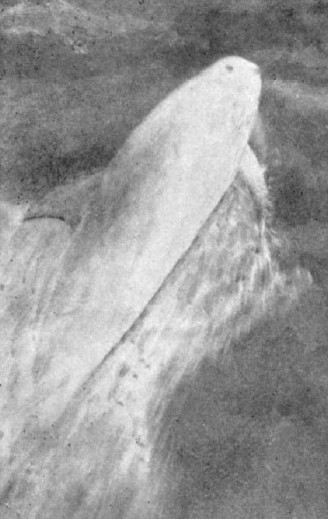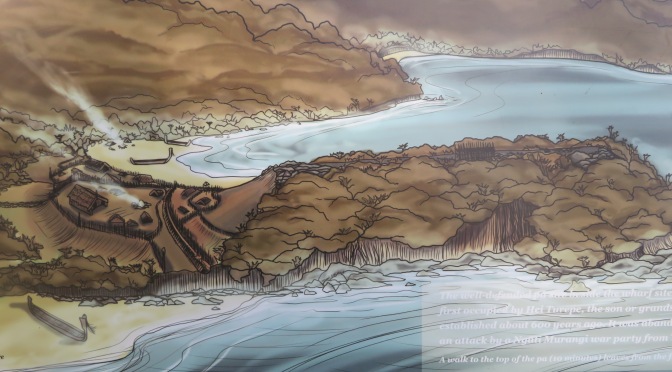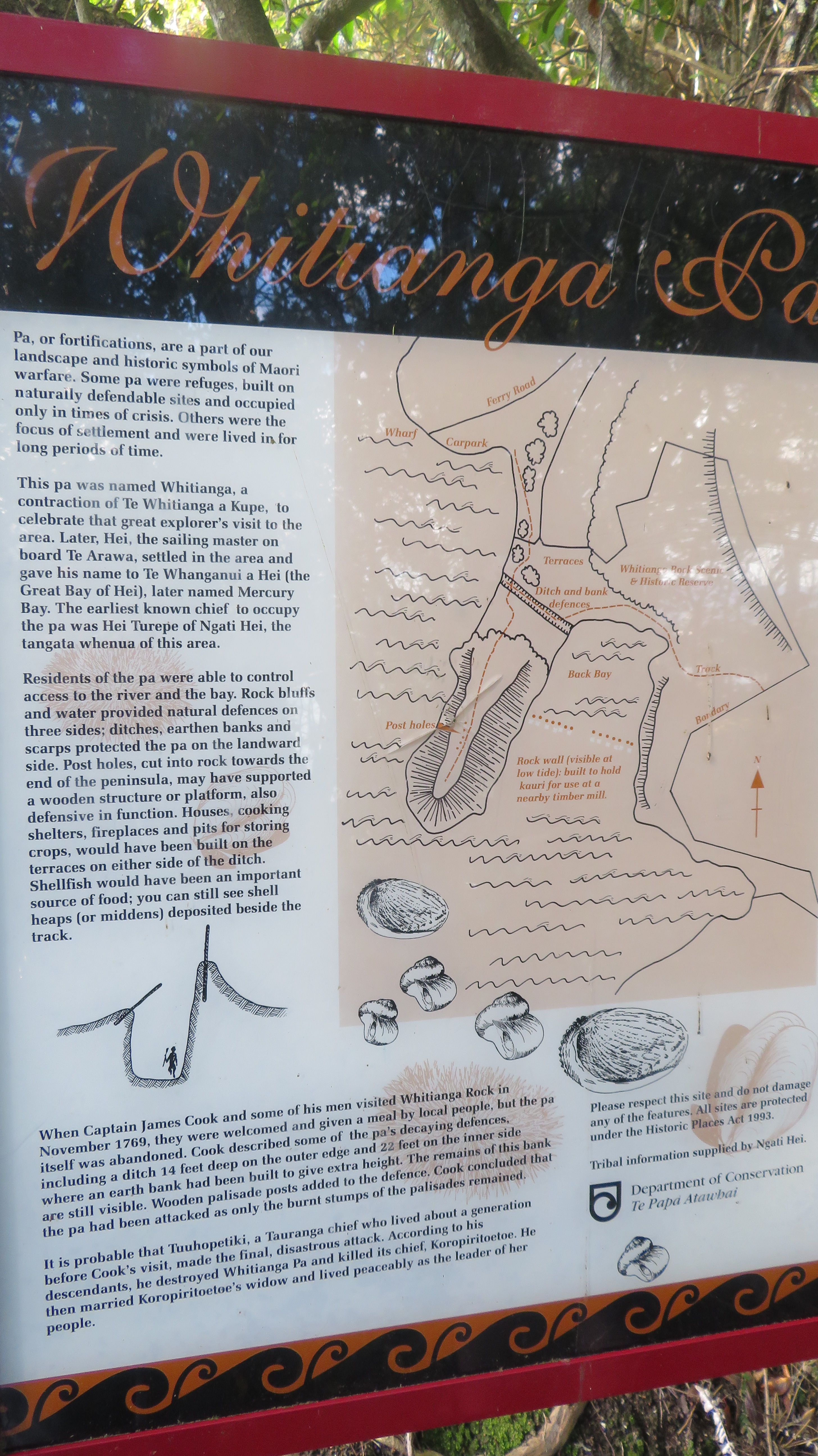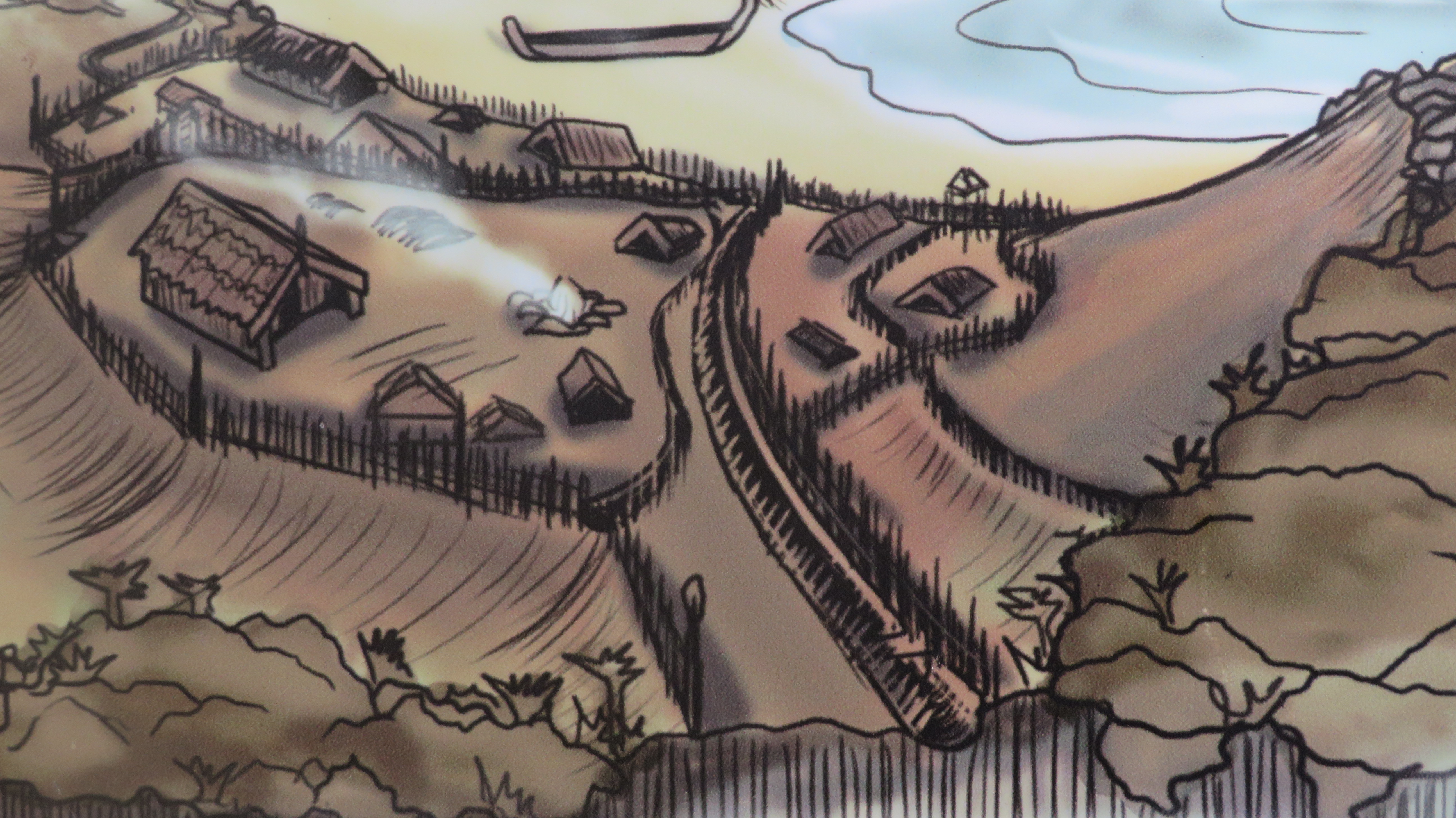Taniwha in Maori Myth
Regardless of where you go in the world and what culture you study, stories of dragons are a recurring theme within the stories of any given people. Dragons abound everywhere and every time, even in our modern and increasingly sceptical world the desire to believe is still strong. Take the stories of the Loch Ness monster or the giant serpents of the Hudson River and other similar creatures that periodically pop up all over the world. The Maori are no different, they too have their myths and traditions involving dragons, of a sort, called taniwha, who are intimately connected with the natural world.

Taniwha are in essence supernatural creatures which can appear in different forms, one of which is dragon-like giant lizard, but they can also resemble sharks, dolphins, whales or even in some instances enchanted logs. They can be the agents of good or evil and sometimes neither. Every region of New Zealand has a host of stories about their local taniwha, many of whom came with the first explorers acting as guardians and protectors. Some are special people who have been turned into taniwha upon their death and others are of unknown origin.
The Maori are descended from the first Polynesian explorers who arrived in the land we now know of as New Zealand approximately eight hundred years ago (give or take a few hundred years…) and there are often similarities in the myths from certain parts of the Pacific, such as the Cook Islands and Society Islands. However, the taniwha of Maori tradition have evolved as a result of the unique environment these early explorers found themselves in. New Zealand’s environment is very different from the island worlds they would have come from. It is after all a much larger world of mountains, deep forests with giant trees, fast flowing rivers and wild coasts. Even today a person walking in the bush can come across areas, secret places where you feel it would not pay to tarry.

In Maori tradition the first people to arrive came on large seagoing waka and many of the early stories relate to these ancestors and how they adjusted to their new land. In the traditions the waka would be accompanied by a taniwha who would be its protector, such as, Kupe’s taniwha, Tuhirangi or the female taniwha Araiteuru who came with the waka Mamari. Though there are some traditions which say she travelled with the waka Takitimu and another taniwha called Ruamono.


Araiteuru gave birth to eleven sons on arrival in New Zealand, who all went digging trenches along the way, thus creating the numerous branches of the Hokianga Harbour. It is said that Lake Omapere was created when one of her sons burrowed inland and thrashed his tail around. As guardian of the Hokianga Harbour Araiteuru dwells in a cave at the south head of the harbour, whilst her companion, Niua, lives in the north head of the harbour.
The taniwha Tuhirangi is said to dwell in the Cook Strait where Kupe left him to guide and protect waka as they crossed between the two islands. Between 1888 and 1912 a Rissos dolphin named Pelorus Jack accompanied ships travelling between the North and South Islands. At the time, local Maori believed this was the taniwha Tuhirangi in the form of a dolphin, guiding and protecting ships in this dangerous stretch of water. A number of years later in the summer of 1955/56 another friendly dolphin appeared, but this time at Opononi in the far north of the North Island. Nicknamed Opo, the dolphin would play and interact with visitors and many Maori believed Opo to be a guardian taniwha.

Tuhirangi and Araiteuru were part of a trio of important taniwha, the third member of this group was a female called Huriawa. Her home is Te Waikoropupr Springs, Golden Bay. She is regarded as brave and wise, travelling through the earth to clear blocked waterways. The springs which are her home are regarded as the purest form of water which both the spiritual and physical source of life. The water is often used for healing and in blessing ceremonies.
Another taniwha which accompanied the ancestral waka of the Tainui from Hawaikii was the whale Paneiraira. His name means ‘spotted head’ referring to his appearance. He was last seen in 1863 just before the war broke out between the Maori and the newly arrived Europeans. It is said he came to warn his people of impending disaster.
In the story of Pania and Karitoki, their son (Moremore) became a taniwha when his father attempted a ritual to keep his mother form returning to the sea people and failed. Moremore is a guardian, or Kaitiaki, of the harbour at Te Whanga-nui-a-Orutu. He appears in different forms, as a shark, an octopus and sometimes a log. Patrolling the harbour, he would protect the people from danger while they gathered seafood and fished.

An important aspect of the people’s relationship with taniwha was acknowledgement by making the necessary offerings or appropriate chants. The local tohunga might off the first kumara to be harvested or the first birds to be caught in the season. Travellers when passing by a known lair might make an offering of a green twig whilst reciting a chant. In 2002, the Ngati Nohu (a hapu of the Waikato area) objected to the construction of part of a highway on the basis it would destroy the lair of their taniwha, Karutahi. After much discussion and to the satisfaction of the elders, the transport agency agreed to reroute the highway to avoid the lair.
One of the more unusual forms a taniwha can take it that of a log. In order to identify the taniwha you would be looking for a log that did behave in the manner of regular log, known as Rakau tipua. On Lake Rotoiti the taniwha Mataura would appear on the water as a huge tree trunk with numerous branches and covered in water weed, particularly on the death of a high-ranking person. When visiting the Kaipara Harbour watch out for a log moving against the current. It is believed to be the taniwha Humuhumu, the guardian of the Ngati Whatua.
Other taniwha can take a myriad of forms, some can be a strange conglomeration of creatures – native lizards such as the gecko or tuatara feature strongly as do bat wings, shark teeth and octopus tentacles.

So far, we have only looked at those taniwha who are kaitiaki, but not all have good intentions. Some may have begun this way, as guardians of the people, but it only takes one mistake and the taniwha can turn on the people.
“Because of their role as guardians they watched vigilantly to ensure that the people respected the tapu restrictions imposed upon them, and any violation of tapu was sure to be punished. They were usually held responsible for deaths by drowning; the person must have insulted the taniwha by breaking tapu in some way” (Orbell M. 1995)
In December 1876, a news article in a Maori language paper told of four young girls who went swimming in a waterhole at Waipapa. Local tradition knew this place to be the lair of the taniwha Taminamina. One of the girls swam to the far side of the waterhole where she climbed up onto a rock and started to drink the nectar of the red flowers of the sacred Rata tree. Without warning, the girl slipped into the water, one of the other girls tried to save her but failed. The water began to froth and swirl and the girls believed it was the taniwha. The elders were of the firm belief that the girl was punished for breaking tapu and drinking the nectar of the sacred Rata.

In 1955, a photograph was taken on the Whanganui River. It depicts a swirling mass in the middle of the river and the inscription on the back of the photo reads:
“On many occasions a large flow of water gushes up from the head of the Wanganui river below the bluff of Buckthaughts Redoubt, just past the village of Upokongaro. This phenomenon is accompanied by a loud bubbling noise and small pieces of waterlogged wood and debris are brought to the surface. Few people have ever seen this occurrence and this photograph was taken in 1955 by one of a party of Wellington visitors camping at Mosquito point.”
In another story the guardian (Takere-piripiri) of Otautahonga Pa, a hillfort of the Ngati Raukawa would have offerings of food left below his cave. One day a gift of eels was mostly eaten by the people who had brought it. This angered the taniwha and he ate the people instead, unfortunately this gave him a taste for human flesh and he left the pa and went to the mountains where he would prey upon travellers.
There were though taniwha who were just plain nasty, such as Ngarara Huarau from the Hawkes Bay who just liked to eat people and then there were the taniwha who liked to kidnap beautiful young women to keep as wives.
However, not all is lost because where there is a threat to the people there will always be heroes. In this case warriors who used their strength and cunning to defeat the taniwha and protect the people. Pitaka, Tamure, Potoru and Ao-Kehu were all famous warriors known for their prowess in defeating taniwha. Tamure had a special mere (greenstone club) which had the power to defeat taniwha. He is well known for defeating the taniwha at Piha who had a taste for people. Interestingly, he did not kill this taniwha but wounded it enough that it could not eat people. The warrior Ao-Kehu hid himself in a hollow log with a shark tooth club and when the taniwha smelt him he swallowed the log whole. Ao-Kehu then hacked his way out of the log and out of the taniwha killing it in the process.

The earliest stories are those connected with the arrival of the first waka. These stories or traditions are in the style of creation myths adapted to the local landscape. Hence, many taniwha are responsible for the sinuous rivers, the many inlets in a harbour or in the case of the Porirua taniwha, Awaru, the flat appearance of Mana Island which she crashed into as she was learning to fly.
Others are stories which serve to identify valuable resources and offer a means of protection of those resources. Then there are those which all societies have; sagas that glorify desirable human qualities. For the Maori, the great warriors used both their minds and their strength to defeat the undesirable taniwha.
The traditions of taniwha are often complex narratives which serve to enforce what was considered acceptable behaviour within an iwi/hapu (tribe/subtribe), whilst at the same time providing reassurance to the people – reasons for why certain events happened. If a group of travellers went missing in the mountains, the most likely reason was that they did not make the right offerings and were eaten by the taniwha. Even today the New Zealand bush is not a place for an inexperienced hiker, accidents can and do happen. Rivers and lakes are deep and full of hazards, drownings are a far too common event, landslides and earthquakes are a regular occurrence. We are all familiar with the sense of helplessness, the feelings of not being in control. Attributing such events to the taniwha, a creature you can placate with offerings, or in some cases can hunt and kill, helps to explain such events and at the same time offers a way to take control once more of their world.

































































































